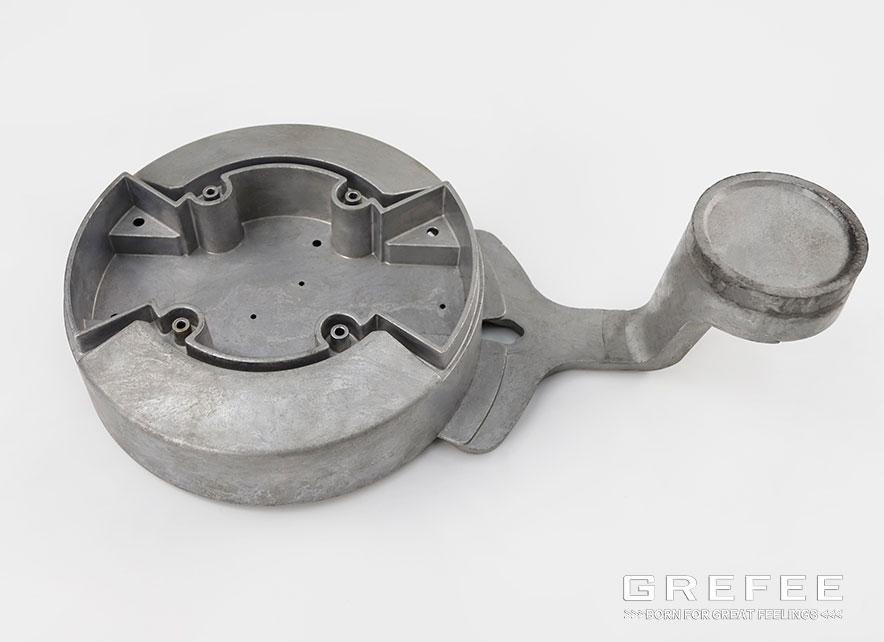What do you Require to check about the Aluminum Alloy Casting?

Posted on : July 20 , 2022 By GREFEE

1.Visual inspection
Processing an analysis about the surface quality of the aluminum alloy castings visually to see whether there is pattern, flow mark, depression and shrinkage, deformation, cold shut, underfeeding, discoloration, or spots. Also, the inspection can be carried out with the magnifier with being magnified more than 5 times.
2. Dimension inspection
A .Use vernier caliper to check the wall thickness and hole diameter of aluminum alloy die castings.
B. The coordinate measuring instrument is used to inspect the appearance dimension and hole position dimension of aluminum alloy die castings.
C. Use the standard test rod to check the hole diameter.
3. Chemical composition analysis
The chemical composition of aluminum alloy die castings should be inspected with the spectrograph or the atomic absorption spectrometer, especially the impurity elements, will lead to the cracks, inclusions, hard spots and other defects to see whether the alloy meets the requirements.
4.Metallographic examination
Processing an analysis to the base structure with defects with utilizing the metallographic microscope and scanning electron microscope to see whether the existence of the cracking, inclusions, hard spots and other defects in aluminum alloy castings. In metallographic examination, the shrinkage cavity presents the irregular edges and dark lumen, whereas the air holes present the smooth edges and bright lumen.
5. X-ray inspection
Use X- ray with strong penetrating ability to act on the photographic film after the inspected aluminum alloy die casting to make it light sensitive to different degrees to take the projection image of the defects on the photographic film, from which we can find the position, shape, size and distribution of the defects.
6.Ultrasonic inspection
The vibration frequency of the ultrasonic wave exceeds 2000 Hz. The refection phenomenon will occur when the ultrasonic wave is transmitted from the interface of one medium to the interface of another medium, which is used to detect the defects position inside the aluminum alloy castings. The test is also can be used to measure the wall thickness of aluminum alloy casting and process the material analysis.
7.Fluorescence test
The ultraviolet light emitted by the mercury quartz lamp can stimulate the luminescent material to make it emit visible light to analyze the small discontinuity defects on the surface of aluminum alloy castings, such as cold shuts, cracks, etc. Put the cleaned aluminum alloy castings into the fluorescent liquid tank to make the fluorescent liquid fully cover the casting surface, then take out the castings and dry the surface before applying the developer powder. The strong fluorescence will make the defects visible when the casting is observed under the mercury lamp and make the size of defects can be determined according to the luminous degree.
8. Colouring inspection
Coloring test is a simple, effective, rapid and convenient defects means, which is combined of the cleaning agent, penetrating agent, and the imaging agent. GREFEE, an aluminum die casting manufacturer, providing the effective testing agent that can simply carry out the inspection and find the defects. Means include:
(1). Clean the surface of the aluminum alloy castings with the cleaning agent
(2). Spray painting the surface of the casting with the red penetrating agent and maintain it be moisturized about 5-10 mins.
(3). Wipe out the residual penetrating agent on the surface of the castings and clean it with the cleaning agent or water.
(4). Spray the image agent. If there is any cracking, loosen, holes on the surface on the castings, the penetrate agents will precipitate the surface with the effect of the image agent. The correspond areas are red and the surface without defects will be no red color.
9. Voltage withstand test
Voltage withstand test is used to test the compact of the casting. Method 1: use the jigs to clamp the castings to make it be compact, and supply the compressed air into the castings before sinking it into the water. Observing whether there is any air bubbles. Supply compressed air under 2 atmospheres and sink it under water for 1-2 mins. At 4 atmospheres, the immersion time is shorter. The testing pressure should be 30%-50% that of the required working pressure.
10.Flexible optical waveguide inspection
An advanced detection device is composed of optical contact, camera, TV image display, optical fiber and special light source. The contact makes joint rotate, and can deliver high-resolution, full-color and real-time images after returning. GREFEE can observe the inner cavity defects of aluminum alloy die castings through TV images, which can be detected visually.
MORE BOLG
Insert mold in injection mold service
What are advantages and disadvantages of Zinc alloy and Aluminum alloy?
Inspection standards for injection molded partappearance
How to judge the quality of your plastic products?
Inspection standards for CNC machining
To ensure that your products are 100% qualified
Categories

Try GREFEE now,for free
We keep your uploaded files confidential and secure.


